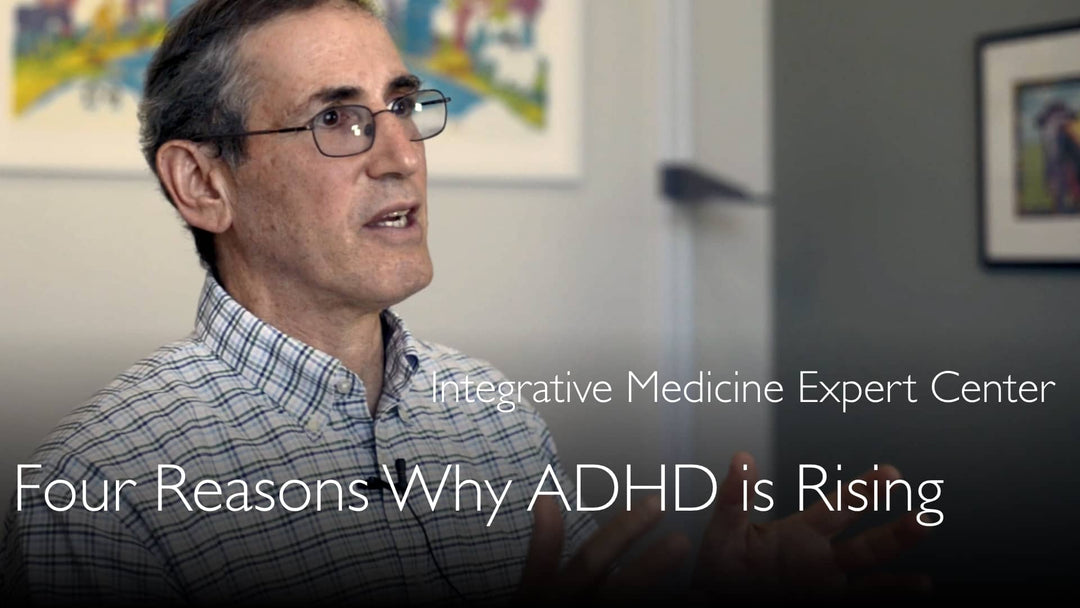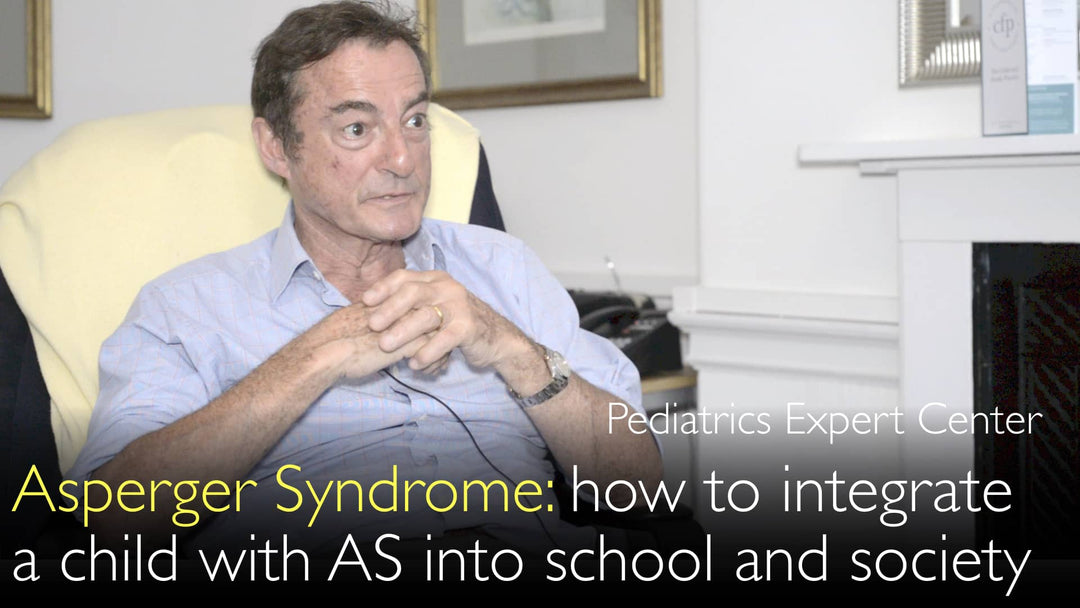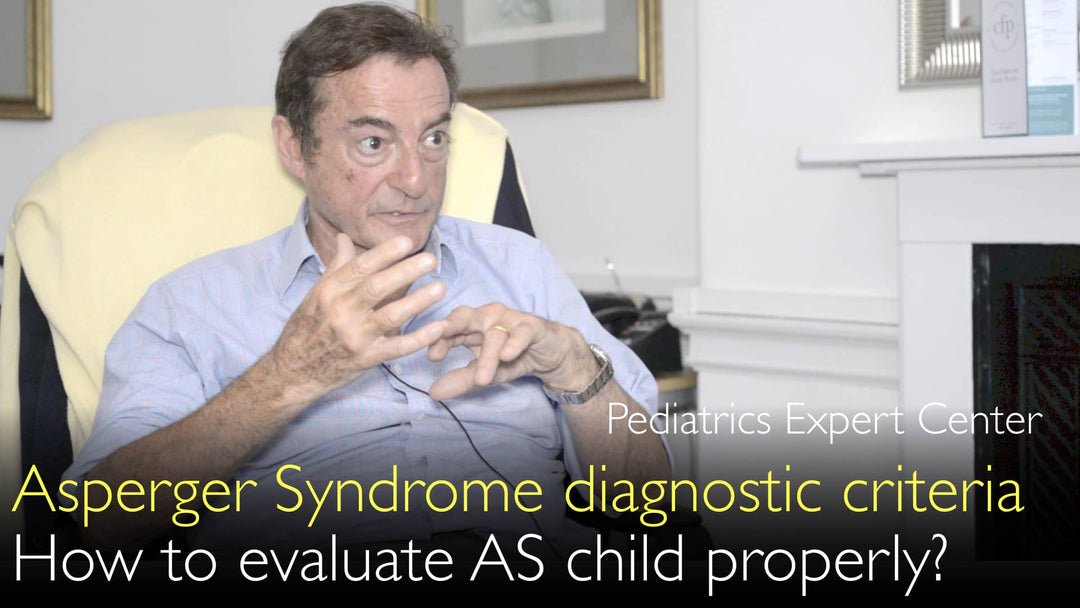Leading expert in holistic ADHD treatment, Dr. Sanford Newmark, MD, explains the complex factors behind the dramatic rise in ADHD diagnoses. He identifies four primary causes for the increase. These include better recognition of the condition, a broader clinical definition, frequent misdiagnosis of other issues, and a genuine rise in cases driven by environmental and societal pressures. Dr. Sanford Newmark, MD, discusses how modern school demands and environmental toxins contribute to the problem. He emphasizes the importance of a thorough evaluation to avoid mislabeling children.
Understanding the Surge in ADHD Diagnoses: Causes and Misdiagnosis Risks
Jump To Section
- ADHD Diagnosis Statistics
- Four Causes of ADHD Rise
- ADHD Misdiagnosis Risks
- Environmental Factors in ADHD
- School Pressure and ADHD Diagnosis
- Holistic ADHD Treatment
- Full Transcript
ADHD Diagnosis Statistics
ADHD diagnosis rates have reached unprecedented levels in the United States. Dr. Sanford Newmark, MD, states that 11% of all school-age children now carry an ADHD diagnosis. This number is even more staggering for high school boys, with 20% being diagnosed with attention deficit hyperactivity disorder. Dr. Anton Titov, MD, highlights that two-thirds of these diagnosed children are treated with stimulant medications. These statistics underscore a significant public health concern that demands a deeper understanding of its root causes.
Four Causes of ADHD Rise
Dr. Sanford Newmark, MD, outlines four distinct reasons that explain the increase in ADHD diagnoses. The first reason is improved recognition; children who were previously mislabeled as "stupid" or having "behavior problems" are now being correctly identified. The second cause is a widened clinical definition of ADHD. The condition now includes an inattention subtype, capturing children who are not hyperactive but struggle to focus. The third reason is a high rate of misdiagnosis, where other conditions mimic ADHD symptoms. The fourth and final cause is a genuine increase in the number of children developing ADHD due to modern environmental and societal stressors.
ADHD Misdiagnosis Risks
Misdiagnosis is a critical factor inflating ADHD statistics. Dr. Sanford Newmark, MD, explains that many children receive a diagnosis after a brief 15 to 20-minute pediatric visit. This rushed process fails to rule out other conditions that present with similar symptoms. Anxiety, depression, and chronic sleep deprivation can all manifest as an inability to focus or impulsivity. Dr. Anton Titov, MD, discusses how a simple mismatch between a child's maturity level and a teacher's expectations can lead to an incorrect ADHD label. This highlights the necessity for comprehensive evaluation before starting any treatment.
Environmental Factors in ADHD
Modern environmental toxins contribute to a genuine rise in ADHD cases. Dr. Sanford Newmark, MD, points to pesticides and other environmental pollutants as significant risk factors. Poor nutrition and the high-stress nature of contemporary life also play a role. These factors can directly impact a child's neurodevelopment, leading to increased hyperactivity, inattention, and impulsivity. As these environmental pressures intensify, more children meet the diagnostic criteria for attention deficit hyperactivity disorder, representing a true increase in prevalence.
School Pressure and ADHD Diagnosis
Increased academic pressure in early education is a major driver of ADHD misdiagnosis. Dr. Newmark contrasts historical kindergarten, which focused on play, with today's curriculum that demands reading, writing, and math skills. Younger children in a class, particularly those with summer birthdays, are at a severe disadvantage. A landmark study found a child born in August is twice as likely to be diagnosed and medicated for ADHD than a peer born in September. This is not due to a real disorder but to relative immaturity. When schoolwork becomes twice as hard, the number of children struggling—and thus being mislabeled—naturally rises.
Holistic ADHD Treatment
A thorough, holistic approach is essential for accurate ADHD diagnosis and effective treatment. Dr. Sanford Newmark, MD, advocates for looking beyond surface symptoms to identify root causes. This includes evaluating a child's sleep patterns, diet, potential environmental exposures, and emotional well-being. Dr. Anton Titov, MD, supports seeking a medical second opinion to confirm an ADHD diagnosis and explore all treatment options. A holistic strategy ensures that children receive the most appropriate care, which may include lifestyle and dietary interventions alongside or instead of medication, leading to better long-term outcomes.
Full Transcript
Dr. Anton Titov, MD: There are four causes of the rise of ADHD in children. Twenty percent of high school boys have an attention deficit hyperactivity disorder diagnosis in the US. A leading expert on the holistic treatment of ADHD discusses attention deficit disorder. Why has the ADHD diagnosis risen in children over the last few decades?
Dr. Sanford Newmark, MD: Doctors miss the diagnosis of ADHD. Many ADHD diagnoses are a mistake. Sleep apnea, a mismatch between child and teacher, and overload by schoolwork can be mistaken for ADHD.
Dr. Anton Titov, MD: What causes ADHD in toddlers? The four causes of the rise of ADHD in children cannot be ignored by parents or doctors. Kindergarten now requires toddlers to learn more. Younger kids are immature and cannot work as hard. They are labeled as "ADHD kids".
Attention deficit hyperactivity disorder diagnoses are on the rise because kids and adults live in a worse environment and eat toxic food.
Dr. Sanford Newmark, MD: Environmental pollution increases the risk for ADHD. Sometimes if you make schoolwork twice as hard, the number of kids with an ADHD diagnosis will rise.
Dr. Anton Titov, MD: In modern society, there is an increase in conditions affecting the mind. It is depression, anxiety, and bipolar disorder. Is ADHD also one of the diseases linked to modern lifestyle, higher stress, deteriorating environment, and worsening food quality?
Dr. Sanford Newmark, MD: Yes, attention deficit disorder is related to all those things. ADHD was probably always around in very small amounts. But the stressors of our society, poor nutrition, and the environmental problems increased. They all increase the amount of children who seem to have ADHD.
Dr. Anton Titov, MD: Today there are four million kids in the United States who have a diagnosis of ADHD. You previously posted a statistic that 11% of all school-age children have attention deficit disorder. Twenty percent of high school boys have a diagnosis of ADHD. Two-thirds of those are being treated with stimulant drugs.
Dr. Sanford Newmark, MD: Exactly!
Dr. Anton Titov, MD: What explains such dramatic growth in the diagnosis of ADHD in children?
Dr. Sanford Newmark, MD: There are four possible reasons for the increase in the diagnosis of attention deficit disorder. One reason is that all these kids always had ADHD. We just missed them. Reason number two: we have widened the definition of ADHD to include more children. Reason number three: we are misdiagnosing a lot of children. Reason number four: there are more kids with ADHD. Those are the only ways we can increase the diagnosis of attention deficit disorder. It's a combination of all four reasons.
We can go into each one. So the first reason is this: thirty or forty years ago, the kids who had ADHD were just mislabeled. These kids we were mislabeling as “stupid”. They were mislabeled as having "behavior problems", as "class clowns". These kids would drop out and go do something else. It's a good thing that we are identifying them now and being able to help them in some way.
Second of all, we have widened the definition of attention deficit disorder. It used to be that only the most hyperactive kids are diagnosed with ADHD. These were the kids who would come into an office and run around. They would jump up and down. They would tear your office apart. These children with ADD could barely sit still for a second. Now most of the kids diagnosed with ADHD will sit very quietly in your office. We have the inattention subtype. This means kids can't focus but they're not hyperactive. We have really widened the definition of attention deficit hyperactivity disorder.
The third reason is this, and we can talk about this some more: we are misdiagnosing many kids with ADHD.
Dr. Anton Titov, MD: How is that?
Dr. Sanford Newmark, MD: For one thing, we don't take the time to adequately evaluate these children. Many of these children are being diagnosed in a 15 or 20 minute visit with a pediatrician, or even with a child psychiatrist. These kids are just given an ADHD medication. We are missing all kinds of other things that could be causing another disease, but that other disease just looks like ADHD symptoms. For example, anxiety, depression, not enough sleep. All those can cause a behavior that looks like ADHD but it is not ADD. It could be just a mismatch between the school and a child, or a teacher and a child.
I said in many of my talks: there is a clinical trial that showed an interesting fact in the United States. If a child was born in August instead of September, this child is more than twice as likely to be treated with ADHD medications. This child is more likely to be diagnosed with ADHD.
Dr. Anton Titov, MD: Why is that?
Dr. Sanford Newmark, MD: September 1st is the cutoff for getting into school. If you were born in August, you are one of the youngest kids in the class. But if you are born in September, you are one of the oldest children in a school class. Just by being a little younger, kids are being diagnosed with ADHD. They don't have ADHD; they're just a little more immature.
This is coupled with another fact. At least in the United States, we are demanding more and more of kids who go to kindergarten. When I went to kindergarten, all you had to do is eat, sleep, and play. Now you are expected to learn to read and write, and do math by the end of kindergarten. Many kids just aren't ready for that, especially the younger children. We are just misdiagnosing a lot of mildly immature kids as having ADHD. This same clinical trial was repeated in Canada and in Iceland with similar results.
This is the final reason for the increase in the diagnosis of attention deficit hyperactivity disorder: are there more kids with ADHD? Yes, there are more children with ADHD. The environment, pesticides, other environmental pollutants, poor foods, and the stress of our environment is creating children who fall into the diagnosis of ADHD.
Dr. Anton Titov, MD: Because what does a diagnosis of ADHD mean? It's some combination of hyperactivity, inability to focus, and impulsivity. Being impulsive causes problems both at home and at school. It has an impact in both those places. You can make school, kindergarten, or first grade twice as hard. Then there are going to be more kids for whom you have created a problem. As we change the environment, more children are going to fulfill the diagnostic criteria for the ADHD category.
Four causes of the rise of ADHD in children. A video interview with a top expert in holistic treatment of ADHD. Misdiagnosis, increased pollution, and harder schoolwork cause a rise in ADHD.







